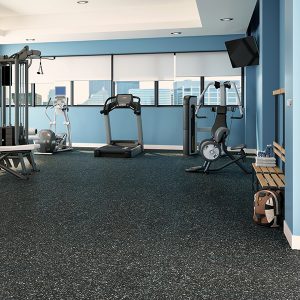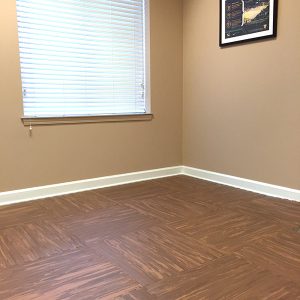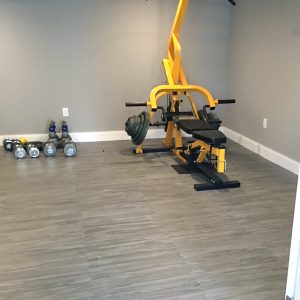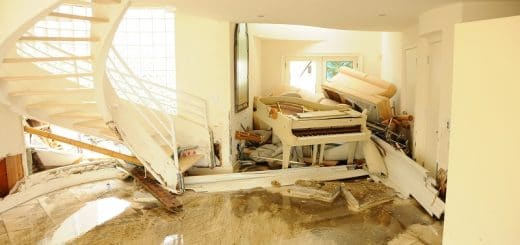5 Common Myths about Rubber Flooring
Rubber flooring has many features that are beneficial when installed in a gym. The rubber floors offer outstanding shock-absorbent properties and are extremely durable. While these are hard facts, myths also surround rubber flooring. Here are the five most common myths.
In order to maximize gain from installing new rubber flooring, it must be used in the right way and in the right areas. Otherwise, the investment in the rubber floors will fail to meet the facility or gym flooring needs. The pros of rubber flooring are many.
Rubber floors require minimal maintenanceMaintenance is the routine care, inspection, and repair of a... More. Spills and dirt can be wiped up right away. Plus, harmful microorganisms have no chance of building up on the material. People who are prone to allergies will benefit from the rubber flooring’s resistance to allergens, like dust mites.
The rubber material is also largely resistant to damaging heat and moisture. The material is recyclable and reusable, which makes it an eco-friendly choice. Environmentally conscious individuals may even opt for recycled rubber flooring, which comes at an attractive low price.
Being highly resistant to wear and tear, rubber floors endure. Falling objects and heavy loads fail to destroy rubber floors. Manufactured to have a soft texture, rubber floors are safe and comfortable. Installing rubber floors is easy and individuals can manage on their own.
Myth 1: Rubber floors are ideal as garage flooring.
 While rubber floors clearly have winning properties, they are unsuitable as garage flooring. Rubber floors are manufactured from rebonded rubber and held together by polyurethane glue. Parked vehicles leak oil over the rubber floors; the oil breaks down the glue and damages the flooring.
While rubber floors clearly have winning properties, they are unsuitable as garage flooring. Rubber floors are manufactured from rebonded rubber and held together by polyurethane glue. Parked vehicles leak oil over the rubber floors; the oil breaks down the glue and damages the flooring.
As mentioned, rubber floors are easy to clean. However, the grease dripping from cars parked in the garage causes stains that are difficult to eliminate. Rubber flooring can also buckle and rip under car tires, which are known to have an extremely strong grip.
Rubber floors are an excellent choice, however, when a vehicle is not left in the garage. The garage may be utilized as a gym, game room or a place of relaxation. Walking over the rubber floors offers traction and comfort. In these scenarios, rubber floors offer quality and durability.
Myth 2: Rubber floors are excellent as basketball court flooring.
Basketball players stop, start and cut throughout every game. Rubber flooring provides too much traction, which prevents athletes from moving around the court freely. Excessive traction increases the rate of sports-related injuries, such as ankle sprains, knee sprains and stubbing.
In addition, when rubber flooring is installed on a basketball court, the basketball will have insufficient bounce. Rather, ideal flooring materials for an outdoor basketball court include concrete; wood flooring may be installed in indoor courts to promote optimal performance.
Myth 3: Rubber floors release tire odors.
 Indeed, rubber floors are manufactured from rubber, so a rubber smell will be somewhat evident. However, not all rubber flooring products release strong odors. Recycled rubber, for instance, will produce a strong scent. Virgin rubber flooring, on the other hand, reeks much less.
Indeed, rubber floors are manufactured from rubber, so a rubber smell will be somewhat evident. However, not all rubber flooring products release strong odors. Recycled rubber, for instance, will produce a strong scent. Virgin rubber flooring, on the other hand, reeks much less.
A strong odorAn odor is a smell, often detectable by the human nose, whic... More can dissuade many from choosing a rubber floor. Upon first installing rubber floors, the smell will be the most powerful. But mopping the floors with soap and water a few times and increasing ventilationVentilation is the process of exchanging or circulating air ... More will decrease the scent over a period of a few days or weeks.
Myth 4: Rubber and foam tiles are identical.
Tiles made from rubber are manufactured differently than those made from foam. Rubber tiles are made with recycled tires or EPDM rubber. These tiles are dense and durable. Foam tiles feature ethylene-vinyl acetate foam. Foam is lightweight and less costly.
Foam flooring (mats or tiles) is a desirable choice in fitness rooms in which low-impact activities are performed and light weights are used. Yoga, bodyweight exercises, stretching and lightweight conditioning are best done on the soft, lightweight, flexible and shock-absorbent foam flooring.
A commercial gym in which heavy weights are dropped and substantial equipment is installed will benefit from durable rubber flooring. Tough workouts, such as Olympic weightlifting and plyometrics, are ideally performed on rubber flooring, which is durable enough to withstand 600-pound deadlifts.
Myth 5: Rubber flooring insulationInsulation is a material used in buildings to reduce the tra... More properties are optimal.
 When rubber flooring is installed along a cold basement floor, the rubber material will also feel chilly. Rubber floors fail to insulate against temperature transmission. However, the rubber floors perform well in terms of insulating against noise produced when weightlifting. Rubber flooring will not keep gym users warm when the weather is cold.
When rubber flooring is installed along a cold basement floor, the rubber material will also feel chilly. Rubber floors fail to insulate against temperature transmission. However, the rubber floors perform well in terms of insulating against noise produced when weightlifting. Rubber flooring will not keep gym users warm when the weather is cold.
When you look beyond the myths and see the winning attributes of rubber flooring for your gym or exercise room, choose DIYRubberFloors for premium products. As a national leader in gym flooring, we offer high-quality flooring options to meet your needs.












